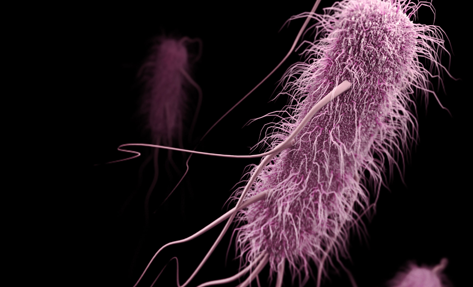Antibiotic agents such as penicillin – the so-called „beta-lactam-antibiotics“ – are following a simple but effective principle: they contain a chemical structure that disturbs bacteria while forming the cell wall and thus destroying them. But especially this group of antibiotics that is often used concerns medical doctors increasingly. Every year they find more and more bacterial strains that are able to produce variants of the „beta-lactamase“ – an enzyme that prevents the antibiotic’s mechanism of action.
In a new study, scientists of the InfectoGnostics research campus Jena were now able to show that many seemingly harmless environmental germs also carry the genetic blueprint for so far unknown variants of beta lactamase. „Most of the previous studies only concentrated on hospital pathogens. We have asked ourselves the more general question: How widespread is the genetic information on this special resistance mechanism?“ explains Dr. Oliwia Makarewicz, head oft he UKJ research lab Clinical Infectiology. The result: Only a small fraction of the examined beta lactamose from environmental and hospital germs could be allocated to enzyme variants known to date.
Possible spread via plasmids
The vast reservoir of unknown resistances concerning environmental germs bears the risk of a transmission to dangerous pathogens. The reason: Bacteria are able to transmit genetic information via small DNA rings – the so-called plasmids – also across species barriers. „Such a gene transfer from environmental germs may occur relatively rarely but if a resistance gene once finds its way to a pathogen, it will undergo a very fast evolution and that will lead to many resistant variants. This makes diagnosis and therapy difficult.“
The study was based on a computerized analysis of amino acid sequences from several big and publicly accessible databases. Christian Brand, first author of the study and PhD student of the UKJ research group was responsible for this data analysis: „We were surprised that no one before has ever considered analysing the vast bacteria databases. This is a true gem which gives us valuable insights into the evolution and spread of bacteria and their resistance.“
In future the InfectoGnostics researchers want to integrate such computerized studies very early in the development of exact rapid tests. As real patient samples often contain many different bacterial species bioinformatic procedures could make a decisive contribution to design molecular tests precisely and thus provide exact diagnosis before starting therapy.
The analysis was carried out in the course of an InfectoGnostics project to develop a rapid test for the detection of so-called “Extended Spectrum Beta-Laktamasen (ESBL)“. This research project is part of the central campus project „Innovative diagnostics for pneumonia in immune suppression“.
